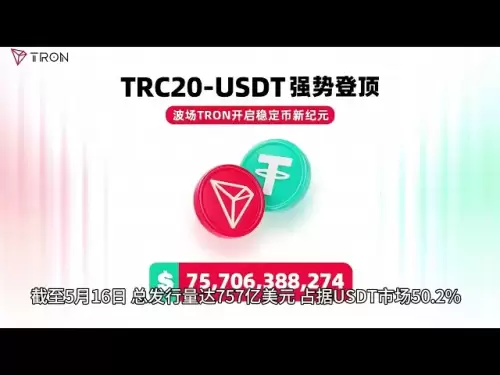-
 Bitcoin
Bitcoin $110,772.4196
4.15% -
 Ethereum
Ethereum $2,654.1868
4.93% -
 Tether USDt
Tether USDt $0.9999
-0.03% -
 XRP
XRP $2.4234
3.31% -
 BNB
BNB $683.9692
4.71% -
 Solana
Solana $178.3010
6.00% -
 USDC
USDC $0.9997
0.00% -
 Dogecoin
Dogecoin $0.2402
6.40% -
 Cardano
Cardano $0.7993
5.71% -
 TRON
TRON $0.2778
2.37% -
 Sui
Sui $4.0785
6.16% -
 Chainlink
Chainlink $16.5421
4.02% -
 Avalanche
Avalanche $24.9354
10.53% -
 Hyperliquid
Hyperliquid $31.1819
18.00% -
 Stellar
Stellar $0.3009
4.18% -
 Shiba Inu
Shiba Inu $0.0...01528
5.74% -
 Bitcoin Cash
Bitcoin Cash $436.5561
10.08% -
 Hedera
Hedera $0.2034
4.00% -
 UNUS SED LEO
UNUS SED LEO $8.8598
0.58% -
 Toncoin
Toncoin $3.1726
4.03% -
 Polkadot
Polkadot $4.8808
4.76% -
 Litecoin
Litecoin $98.6118
3.63% -
 Monero
Monero $404.1019
11.87% -
 Bitget Token
Bitget Token $5.3138
3.44% -
 Pepe
Pepe $0.0...01444
7.80% -
 Pi
Pi $0.8244
2.90% -
 Dai
Dai $0.9999
0.00% -
 Ethena USDe
Ethena USDe $1.0003
-0.03% -
 Bittensor
Bittensor $468.0346
12.86% -
 Uniswap
Uniswap $6.4345
3.81%
What does it mean that the three BOLL tracks are moving upward at the same time? Is it a strong bullish signal?
When all three Bollinger Bands move upward together in crypto trading, it's a strong bullish signal, but confirm with RSI or MACD to avoid false signals.
May 22, 2025 at 11:07 am
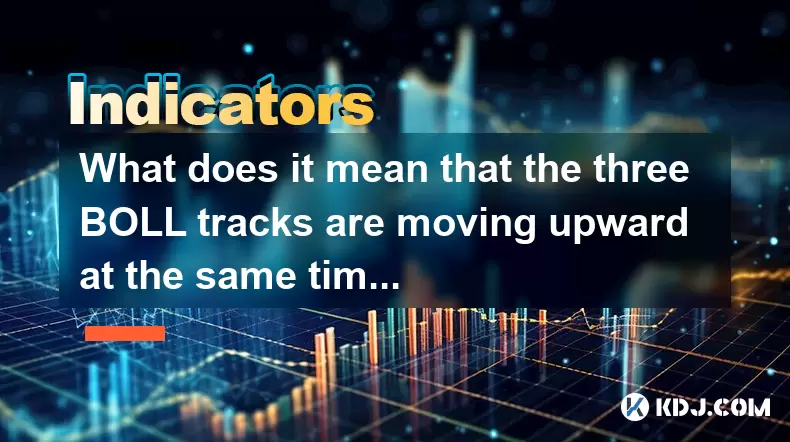
When discussing the movement of the Bollinger Bands (BOLL) in the context of cryptocurrency trading, understanding the implications of the three bands moving upward simultaneously is crucial. Bollinger Bands are a technical analysis tool developed by John Bollinger, which consist of a middle band being a simple moving average (SMA), and two outer bands that are standard deviations away from the middle band. In this article, we will explore what it means when all three BOLL tracks move upward at the same time and whether this can be considered a strong bullish signal in the crypto market.
Understanding Bollinger Bands
Bollinger Bands are composed of three lines: the middle band, which is typically a 20-day simple moving average (SMA); the upper band, which is the middle band plus two standard deviations; and the lower band, which is the middle band minus two standard deviations. These bands expand and contract based on the volatility of the market. When the bands are close together, it indicates low volatility, and when they are far apart, it signifies high volatility.
The Significance of All Three Bands Moving Upward
When all three Bollinger Bands move upward simultaneously, it suggests that the market is experiencing an uptrend. The middle band, being the SMA, moving upward indicates that the average price of the cryptocurrency over the selected period is increasing. The upper and lower bands moving upward alongside the middle band further reinforces this trend, showing that the price is not only increasing but doing so with consistent volatility.
Is This a Strong Bullish Signal?
The movement of all three Bollinger Bands upward can indeed be considered a strong bullish signal. This is because it indicates a sustained upward momentum in the price of the cryptocurrency. Traders often look for such signals to confirm that the market is in a strong uptrend, which could be a good time to enter or add to long positions.
However, it is important to consider other factors and indicators alongside Bollinger Bands. While the upward movement of the bands can signal a strong bullish trend, it should not be the sole basis for making trading decisions. Other technical indicators, such as the Relative Strength Index (RSI) or Moving Average Convergence Divergence (MACD), can provide additional confirmation of the trend's strength and sustainability.
Practical Application in Cryptocurrency Trading
To apply the knowledge of Bollinger Bands moving upward in cryptocurrency trading, follow these steps:
- Select a Cryptocurrency: Choose the cryptocurrency you want to analyze. This could be Bitcoin, Ethereum, or any other token you are interested in.
- Access a Trading Platform: Use a trading platform or charting tool that supports Bollinger Bands, such as TradingView or Binance.
- Set Up Bollinger Bands: On the chart, add the Bollinger Bands indicator. Ensure the settings are standard, typically a 20-day SMA with two standard deviations for the upper and lower bands.
- Monitor the Bands: Observe the movement of the bands over time. Look for instances where all three bands are moving upward together.
- Confirm with Other Indicators: Use additional technical indicators to confirm the bullish trend. For example, check if the RSI is above 50 or if the MACD line is above the signal line.
- Make Trading Decisions: Based on the confirmed bullish signal, decide whether to enter a long position or add to existing positions.
Potential Pitfalls and Considerations
While the upward movement of all three Bollinger Bands can be a strong bullish signal, there are potential pitfalls to consider. One key consideration is the possibility of a false signal. Sometimes, the bands may move upward briefly due to temporary market conditions, only to reverse shortly afterward. To mitigate this risk, always use multiple indicators and consider the broader market context.
Another factor to keep in mind is overbought conditions. Even if the bands are moving upward, if the price is significantly above the upper band, it might indicate that the cryptocurrency is overbought and due for a correction. In such cases, the bullish signal might be less reliable.
Real-World Examples
To illustrate the concept, let's look at a real-world example. Suppose you are analyzing the price chart of Bitcoin and notice that over the past month, all three Bollinger Bands have been moving steadily upward. The middle band, representing the 20-day SMA, is consistently rising, and both the upper and lower bands are following suit. This scenario would suggest a strong bullish trend in Bitcoin's price.
In another example, consider Ethereum. If you observe that the Bollinger Bands for Ethereum are moving upward together, and this movement is corroborated by a rising MACD and an RSI above 60, it would reinforce the bullish signal, making it a potentially good time to buy or hold Ethereum.
Frequently Asked Questions
Q: Can Bollinger Bands be used for short-term trading in cryptocurrencies?
A: Yes, Bollinger Bands can be used for short-term trading in cryptocurrencies. Traders often use shorter time frames, such as hourly or 4-hour charts, to identify short-term trends and potential entry and exit points. However, the effectiveness of Bollinger Bands in short-term trading depends on the overall market conditions and the volatility of the specific cryptocurrency being traded.
Q: How do Bollinger Bands differ from other volatility indicators like the Average True Range (ATR)?
A: Bollinger Bands and the Average True Range (ATR) both measure volatility, but they do so in different ways. Bollinger Bands use standard deviations to create dynamic bands around a moving average, providing a visual representation of volatility and price levels. In contrast, ATR calculates the average range of price movement over a specified period, giving a numerical value of volatility. While Bollinger Bands can indicate overbought or oversold conditions, ATR focuses solely on the magnitude of price movements.
Q: Are there specific cryptocurrencies where Bollinger Bands are more effective?
A: The effectiveness of Bollinger Bands does not depend on the specific cryptocurrency but rather on the market conditions and the volatility of the asset. Generally, cryptocurrencies with higher liquidity and trading volumes, such as Bitcoin and Ethereum, tend to provide more reliable signals due to their active trading environments. However, Bollinger Bands can be applied to any cryptocurrency, and their effectiveness will vary based on the asset's volatility and market dynamics.
Q: How often should I check the Bollinger Bands for trading signals?
A: The frequency of checking Bollinger Bands depends on your trading strategy. For long-term investors, checking the bands on a daily or weekly basis may be sufficient. For short-term traders, monitoring the bands on an hourly or 4-hour basis could be more appropriate. It's important to balance the need for timely information with the risk of overtrading based on short-term fluctuations.
Disclaimer:info@kdj.com
The information provided is not trading advice. kdj.com does not assume any responsibility for any investments made based on the information provided in this article. Cryptocurrencies are highly volatile and it is highly recommended that you invest with caution after thorough research!
If you believe that the content used on this website infringes your copyright, please contact us immediately (info@kdj.com) and we will delete it promptly.
- Bitcoin Surges Past $100K as Institutional Buying, Trade Deals, and U.S. Policy Clarity Fuel Bullish Sentiment
- 2025-05-22 19:30:13
- Volatility Shares Launches XRP Futures ETF on Nasdaq, the First Such Product
- 2025-05-22 19:30:13
- Nexchain Pauses Two High-Profile Altcoin ETF Proposals, Postponing Judgments on Spot XRP and Dogecoin Funds
- 2025-05-22 19:25:13
- FIFA to Power Its Own Dedicated Layer-1 Blockchain Using Avalanche's Network
- 2025-05-22 19:25:13
- Pi Network (PI) Shows Signs of Recovery After May Plunge
- 2025-05-22 19:20:13
- Shibarium Network New Account Creation Falls Below 100
- 2025-05-22 19:20:13
Related knowledge
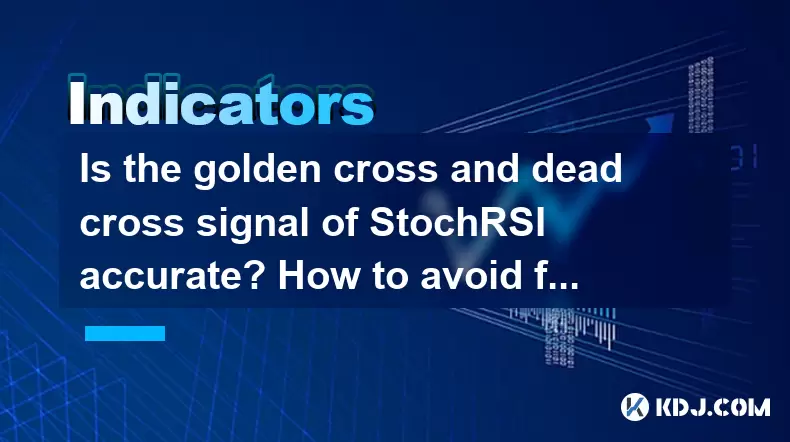
Is the golden cross and dead cross signal of StochRSI accurate? How to avoid false signal interference?
May 22,2025 at 06:49pm
The golden cross and dead cross signals generated by the Stochastic RSI (StochRSI) are popular tools used by traders within the cryptocurrency market to identify potential buy and sell opportunities. The StochRSI is a momentum oscillator that ranges between 0 and 1, and it's derived from the Relative Strength Index (RSI). Understanding the accuracy of t...
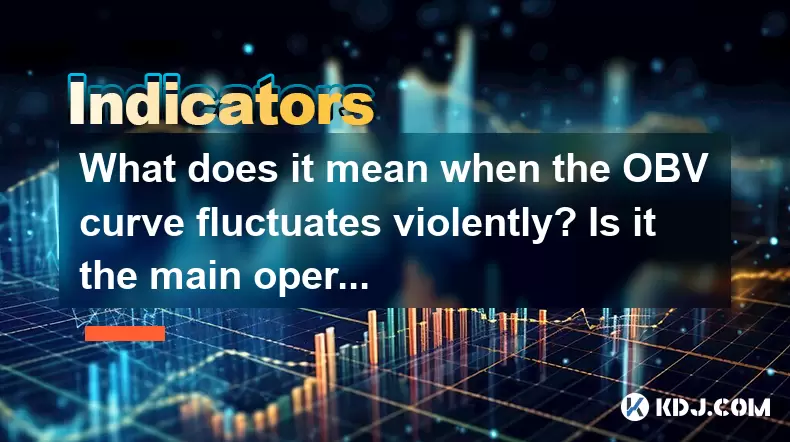
What does it mean when the OBV curve fluctuates violently? Is it the main operator or noise interference?
May 22,2025 at 03:57pm
The On-Balance Volume (OBV) indicator is a popular technical analysis tool used by traders and investors within the cryptocurrency market to predict price movements based on volume changes. When the OBV curve fluctuates violently, it raises questions about the underlying causes and the implications for trading strategies. In this article, we will explor...
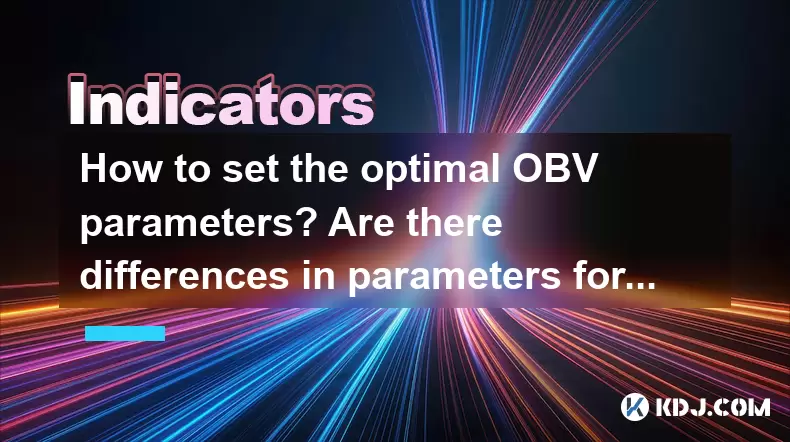
How to set the optimal OBV parameters? Are there differences in parameters for different cycles?
May 22,2025 at 04:21pm
The On-Balance Volume (OBV) indicator is a popular technical analysis tool used by cryptocurrency traders to predict price movements based on volume flow. Setting the optimal OBV parameters is crucial for maximizing the effectiveness of this indicator. This article will delve into how to set these parameters and whether they should be adjusted for diffe...
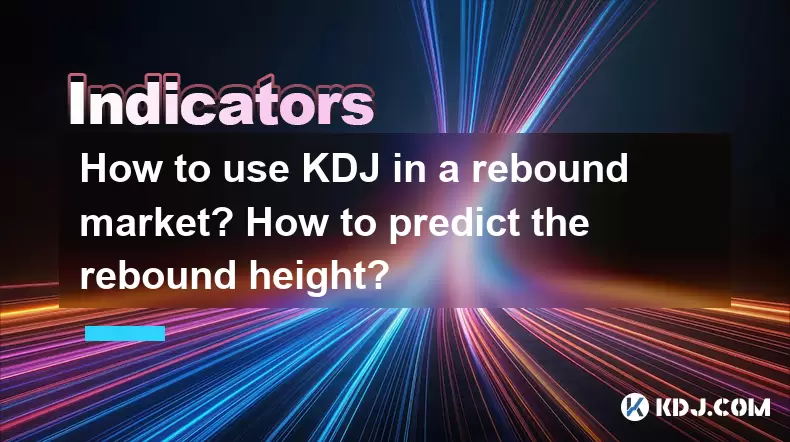
How to use KDJ in a rebound market? How to predict the rebound height?
May 22,2025 at 07:14pm
How to Use KDJ in a Rebound Market? How to Predict the Rebound Height? The KDJ indicator, also known as the Stochastic Oscillator, is a popular technical analysis tool used by traders to identify potential reversals in the market. In a rebound market, understanding how to effectively use the KDJ indicator can be crucial for making informed trading decis...
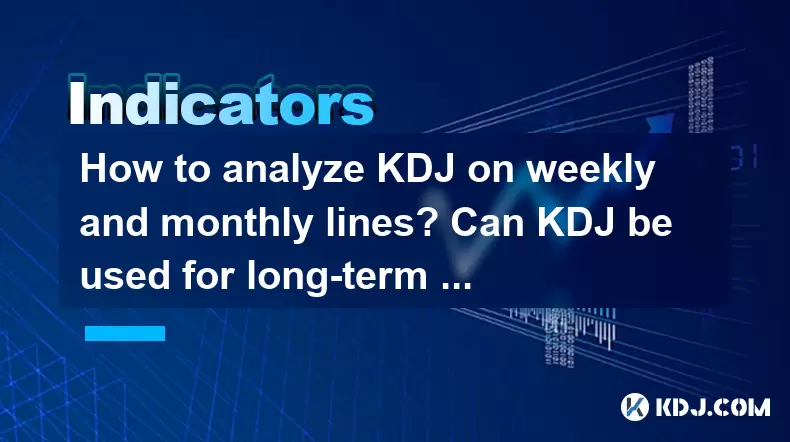
How to analyze KDJ on weekly and monthly lines? Can KDJ be used for long-term operations?
May 22,2025 at 02:21pm
Analyzing the KDJ indicator on weekly and monthly lines is a valuable skill for traders interested in long-term cryptocurrency operations. The KDJ, also known as the Stochastic Oscillator, is a momentum indicator that compares a closing price of a cryptocurrency to its price range over a certain period. By applying the KDJ to weekly and monthly timefram...
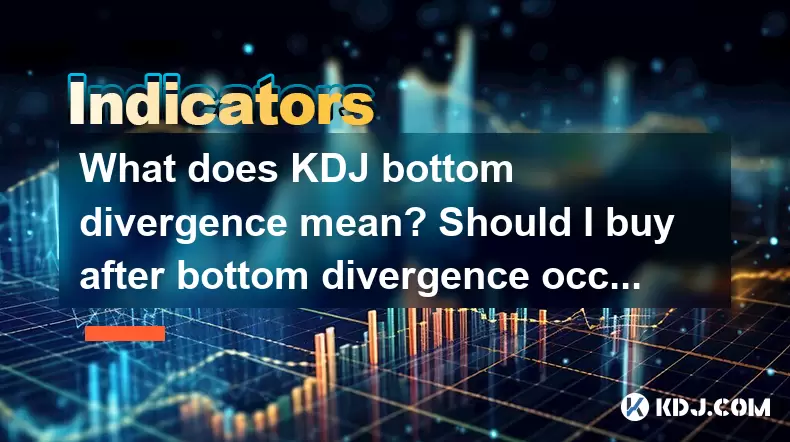
What does KDJ bottom divergence mean? Should I buy after bottom divergence occurs?
May 22,2025 at 07:21pm
What is KDJ Bottom Divergence?KDJ, or the Stochastic Oscillator, is a popular technical analysis tool used in the cryptocurrency market to predict price movements. It consists of three lines: K, D, and J, which are calculated based on the price momentum over a specific period. Bottom divergence in the context of KDJ occurs when the price of a cryptocurr...

Is the golden cross and dead cross signal of StochRSI accurate? How to avoid false signal interference?
May 22,2025 at 06:49pm
The golden cross and dead cross signals generated by the Stochastic RSI (StochRSI) are popular tools used by traders within the cryptocurrency market to identify potential buy and sell opportunities. The StochRSI is a momentum oscillator that ranges between 0 and 1, and it's derived from the Relative Strength Index (RSI). Understanding the accuracy of t...

What does it mean when the OBV curve fluctuates violently? Is it the main operator or noise interference?
May 22,2025 at 03:57pm
The On-Balance Volume (OBV) indicator is a popular technical analysis tool used by traders and investors within the cryptocurrency market to predict price movements based on volume changes. When the OBV curve fluctuates violently, it raises questions about the underlying causes and the implications for trading strategies. In this article, we will explor...

How to set the optimal OBV parameters? Are there differences in parameters for different cycles?
May 22,2025 at 04:21pm
The On-Balance Volume (OBV) indicator is a popular technical analysis tool used by cryptocurrency traders to predict price movements based on volume flow. Setting the optimal OBV parameters is crucial for maximizing the effectiveness of this indicator. This article will delve into how to set these parameters and whether they should be adjusted for diffe...

How to use KDJ in a rebound market? How to predict the rebound height?
May 22,2025 at 07:14pm
How to Use KDJ in a Rebound Market? How to Predict the Rebound Height? The KDJ indicator, also known as the Stochastic Oscillator, is a popular technical analysis tool used by traders to identify potential reversals in the market. In a rebound market, understanding how to effectively use the KDJ indicator can be crucial for making informed trading decis...

How to analyze KDJ on weekly and monthly lines? Can KDJ be used for long-term operations?
May 22,2025 at 02:21pm
Analyzing the KDJ indicator on weekly and monthly lines is a valuable skill for traders interested in long-term cryptocurrency operations. The KDJ, also known as the Stochastic Oscillator, is a momentum indicator that compares a closing price of a cryptocurrency to its price range over a certain period. By applying the KDJ to weekly and monthly timefram...

What does KDJ bottom divergence mean? Should I buy after bottom divergence occurs?
May 22,2025 at 07:21pm
What is KDJ Bottom Divergence?KDJ, or the Stochastic Oscillator, is a popular technical analysis tool used in the cryptocurrency market to predict price movements. It consists of three lines: K, D, and J, which are calculated based on the price momentum over a specific period. Bottom divergence in the context of KDJ occurs when the price of a cryptocurr...
See all articles
























